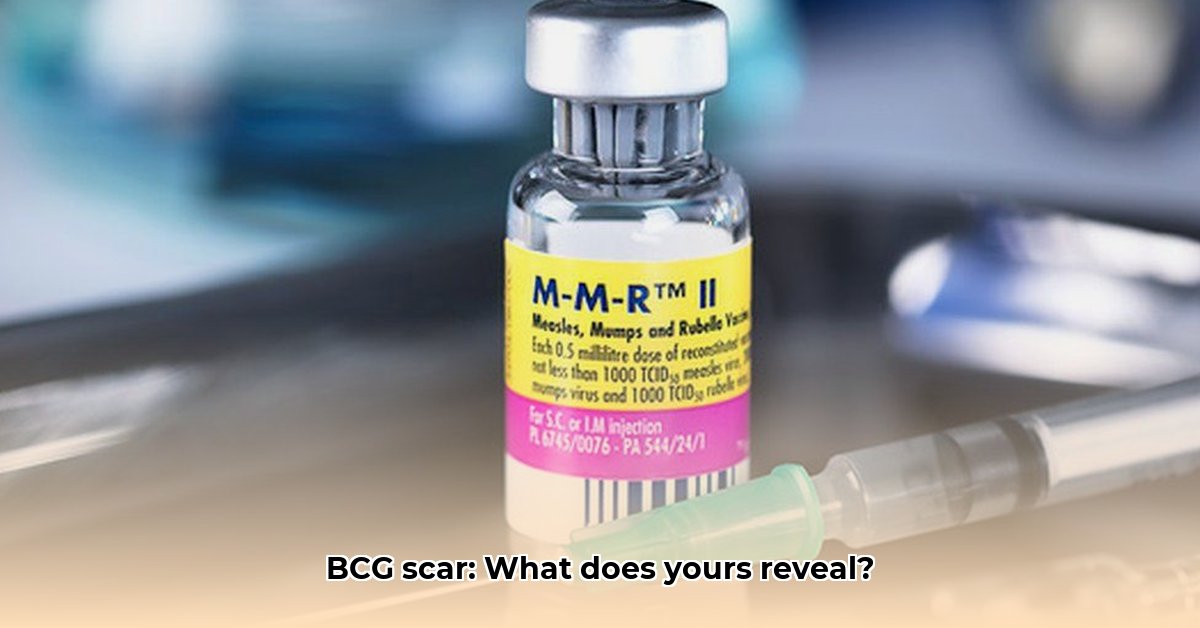
BCG Vaccine Scarring: A Closer Look
That small mark on your arm, a common sight among South Africans, is often a BCG (Bacille Calmette-Guérin) vaccine scar. This scar results from the vaccination against tuberculosis (TB), a serious bacterial infection primarily affecting the lungs. The appearance of a BCG scar is highly variable; some are barely noticeable, while others are more prominent, raised, or even slightly indented. Crucially, a BCG scar doesn't guarantee complete immunity to TB, but rather contributes to a stronger immune response. Think of it as bolstering your body's defenses.
The BCG Scar and TB Testing: A Necessary Distinction
The presence of a BCG scar can complicate TB testing. The Mantoux skin test, a standard TB diagnostic tool, sometimes yields false positives in individuals with BCG vaccination history. This happens because the body's immune system still 'remembers' the BCG vaccine and might react similarly to the TB protein injected during the test. To circumvent this issue, healthcare professionals often employ an Interferon-Gamma Release Assay (IGRA) blood test—a more precise method that directly detects signs of TB infection in the blood, thereby reducing ambiguity caused by prior BCG vaccination.
How prevalent are BCG scars in South Africa?
BCG vaccination is widespread in South Africa due to the high prevalence of TB. Almost every South African born after 1960 should have a BCG scar. The prevalence is high, but there is no exact data readily available for a point-prevalence study.
Smallpox Scarring: A Relic of the Past
Smallpox, a devastating disease eradicated globally, left its mark—literally—on millions. Those who received the smallpox vaccine often developed a distinctive scar, usually a pitted or indented mark. These scars serve as a historical marker, a testament to a disease once a major global health threat. The appearance of smallpox scars may vary slightly depending on the type of vaccine used. Importantly, these scars are rarely seen anymore in younger populations.
Comparing BCG and Smallpox Scars: Key Differences
The key distinctions between BCG and smallpox scars are crucial for accurate diagnosis and disease tracking. Here's a concise comparison:
| Feature | BCG Vaccine Scar | Smallpox Scar |
|---|---|---|
| Appearance | Variable; often raised, sometimes slightly indented | Typically pitted or indented, often circular |
| Texture | Can be raised, lumpy or smooth | Usually indented, smooth |
| Colour | Variable; can be pinkish, light brown, or similar to surrounding skin | Usually matches surrounding skin tone |
| TB Testing | May interfere with Mantoux test; IGRA preferred | Does not interfere with TB tests |
| Prevalence | High in regions with high TB incidence | Rare in younger populations, more common in older generations |
Practical Implications: Why the Distinction Matters
Understanding the differences between BCG and smallpox scars holds significant implications:
- Healthcare Professionals: Accurate scar identification is essential for interpreting TB test results and avoiding misdiagnosis.
- Public Health Officials: This knowledge informs vaccination strategies and disease surveillance.
- Researchers: Studying these scars contributes to our understanding of vaccine efficacy and immunity.
- Individuals: Understanding your own vaccination history can empower informed healthcare decisions.
Conclusion: The Legacy of Vaccination
The BCG vaccine scar, along with smallpox scars, represents our ongoing efforts to control and ultimately eradicate infectious diseases. While these scars offer a visible reminder of past vaccination campaigns, recognizing their distinct characteristics is vital for accurate diagnosis and public health monitoring. The ongoing research into vaccine development serves as a testament to our commitment to safeguarding health and well-being for future generations. The differences between these scars underpin several essential aspects of healthcare and epidemiology.
"The ability to differentiate between BCG and smallpox scars is fundamental for accurate interpretation of TB tests and overall patient care," says Dr. Nomusa Mthethwa, Pulmonologist at Chris Hani Baragwanath Hospital. "Misinterpretation can lead to unnecessary treatment or delayed diagnosis." This highlights the importance of accurate identification in daily clinical practice.